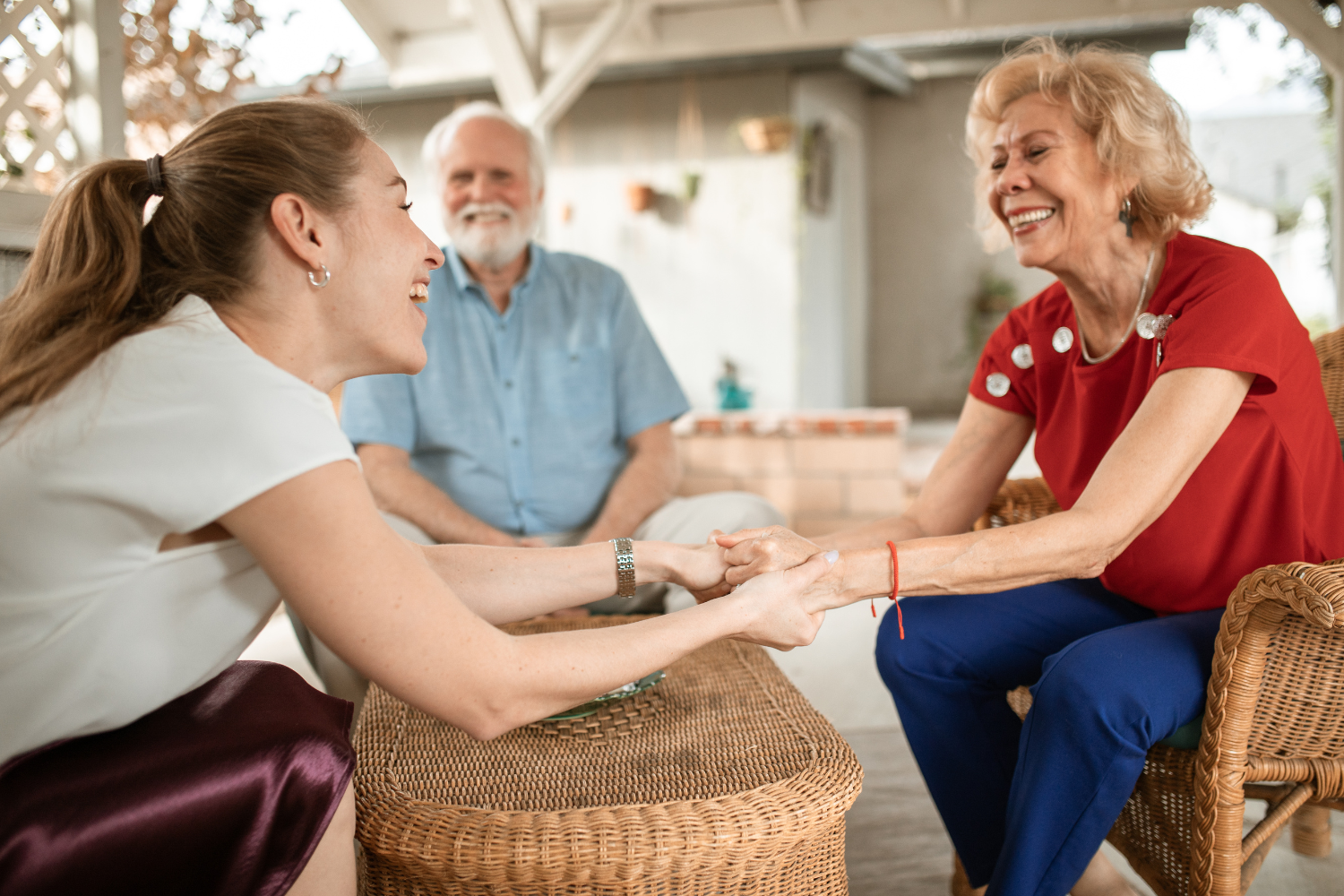Effective social etiquette tips that baby boomers can use to minimize interpersonal conflicts easily.

Maintaining strong social etiquette helps baby boomers navigate interactions with grace and reduce unnecessary drama. This guide presents essential principles focused on respectful behavior, clear communication, and empathy. Following these rules supports calmer exchanges and fosters better relationships by addressing common pitfalls like interrupting or ignoring boundaries. Understanding and practicing these concepts leads to smoother, more positive connections in everyday life.
1. Greet people warmly with a smile to set a positive tone.

Meeting someone with a warm smile can create an inviting atmosphere, setting the tone for positive interactions. It shows openness and friendliness without needing words. This simple gesture can encourage others to feel at ease in social settings and foster trust.
A smile can diffuse tension when entering a room, helping others to relax and engage more readily. Consistently smiling can build a reputation for approachability, creating smoother social interactions with minimal effort. While facial expressions vary by culture, the smile remains a universal signal of goodwill.
2. Listen actively and avoid interrupting during conversations.

Listening actively involves focusing fully on the speaker and not interrupting during conversations. This practice demonstrates respect and shows genuine interest in understanding others’ viewpoints, fostering open, effective communication.
Engaging in active listening can minimize misunderstandings and strengthens relationships by ensuring all parties feel heard. It reinforces the value of patience and attentiveness in conversations, paving the way for more meaningful dialogues and reducing potential conflicts.
3. Use polite language such as please, thank you, and excuse me.

Polite language, such as saying please, thank you, and excuse me, maintains a respectful atmosphere in interactions. These phrases show consideration and acknowledge others’ feelings, fostering smoother communication. Using polite language builds positive relationships, promoting harmony in social encounters.
Consistently incorporating these courteous phrases into everyday discourse demonstrates maturity and awareness of social etiquette. It’s a subtle yet powerful way to encourage reciprocity in respect and kindness, contributing to a more pleasant and cohesive social environment.
4. Show respect for others’ opinions, even when they differ.

Recognizing and respecting others’ opinions, even those that differ from your own, is crucial for fostering mutual respect and understanding. This involves acknowledging diverse perspectives without immediate judgment or dismissal, paving the way for richer conversations.
Embracing differing opinions can lead to personal growth as it broadens viewpoints and enhances empathy. Valuing diverse perspectives builds bridges and reduces social drama by promoting openness and reducing confrontations. Engaging in respectful discourse is a vital component of healthy relationships.
5. Keep your phone on silent or vibrate in social settings.

Keeping a phone on silent or vibrate during gatherings demonstrates respect for those present by minimizing distractions. It indicates a commitment to being fully present and engaged, honoring the time and attention of others in the setting.
Ensuring a phone doesn’t interrupt a social occasion shows an understanding of etiquette in a technology-driven world. It’s a subtle yet impactful way to emphasize the value of in-person interactions and secures focus, preventing potential disruptions and maintaining conversational flow.
6. Avoid oversharing personal details in casual conversations.

Casual conversations usually focus on light topics, and oversharing personal details might make others uncomfortable. Understanding the boundaries of casual chat helps maintain social ease and ensures conversations remain balanced and engaging for all involved.
By sharing personal details judiciously, a person can foster meaningful connections while retaining an appropriate degree of privacy. It aids in establishing trust without overwhelming the other party, facilitating harmonious interactions that respect both personal space and interpersonal curiosity.
7. Arrive on time to show consideration for others’ schedules.

Arriving on time for appointments or social gatherings signals respect for others’ schedules and planning. Punctuality reflects reliability, showing that commitments are valued and considerations are made for mutual convenience.
Being punctual enhances personal and professional relationships by demonstrating accountability and dependability. Adhering to agreed-upon times minimizes frustration and fosters an environment of mutual respect, ensuring smoother interactions and a positive impression. It sets a foundation for trust and reliability in all environments.
8. Offer help or support when someone appears to need it.

Offering help or support when others appear in need shows compassion and builds community bonds. Volunteering support willingly enhances relationships by creating a network of mutual assistance, indicating empathy and understanding in action.
Providing assistance when appropriate can inspire reciprocity and reinforce social cohesion. Such thoughtful actions build goodwill and trust, reducing barriers and paving the way for stronger, more cooperative interactions among peers or community members.
9. Maintain good posture and eye contact to convey confidence.

Maintaining good posture and eye contact conveys confidence and engagement during interactions. These nonverbal cues communicate attentiveness and respect, enhancing the quality of exchanges and building a foundation of positive communication practices.
Establishing eye contact during conversations signifies interest and helps in reading social cues, allowing for nuanced interactions. This habit not only asserts presence and credibility but also fosters more meaningful connections, promoting understanding and alignment in discussions.
10. Dress appropriately for the occasion to show respect.

Dressing appropriately for various occasions shows awareness of social norms and respect for the event and participants. It sets the appropriate tone and aligns with the nature of the gathering, aiding in comfortable and confident social navigation.
Attire choices reflect attention to etiquette and effort to engage with communal standards, further aiding in ease of interaction. Carefully considered clothing choices not only show respect but also contribute to setting the atmosphere collaboratively, enhancing social adaptability and interaction.
11. Limit gossip and focus on positive topics during gatherings.

Limiting gossip and steering conversations toward positive topics encourages a healthier social environment. Focusing on uplifting subjects minimizes drama and creates a safe space for open, honest interactions, fostering camaraderie and trust among participants.
Reducing gossip shows maturity and a commitment to nurturing positive relationships, while encouraging constructive dialogue bolsters mutual respect. This approach strengthens community bonds and elevates the quality of social situations, contributing to a collaborative and supportive atmosphere.
12. Express gratitude sincerely when receiving compliments or favors.

Expressing gratitude sincerely when receiving compliments or favors signifies appreciation and humility. Acknowledging others’ efforts with heartfelt thanks promotes good will and strengthens social connections, underscoring the importance of mutual acknowledgment in interactions.
Sincere gratitude fosters a positive and encouraging environment, reinforcing relationships and encouraging ongoing generosity. It reflects understanding of social reciprocity, enhancing both personal and communal well-being. This genuine exchange of appreciation can build trust and cohesion within varied social frameworks.
